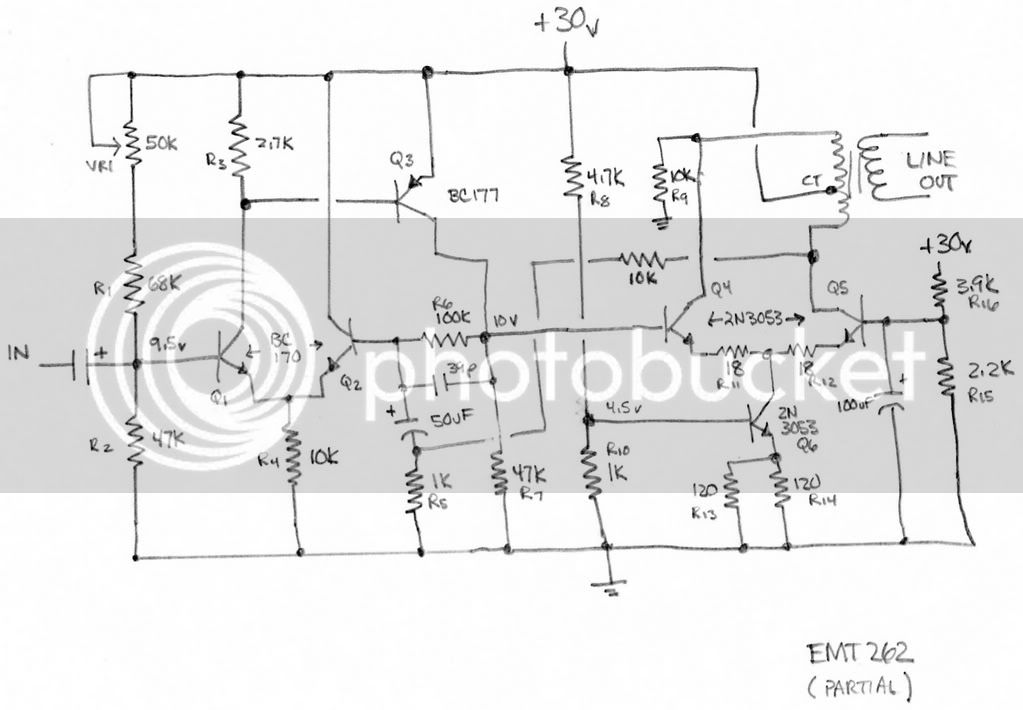tomelectro
Well-known member
So I had to repair the electronics for an EMT plate reverb - the repair was easy enough (bad 2N3053), but I got a little stumped when trying to analyze the circuit. I figured the tail current in the differential input pair (through R4) should be about .9mA, so I would expect 1/2 of that to flow through Q1 and half through Q2. But the base-emitter junction of Q3 is anchoring the collector of Q1 one Vbe drop below Vcc (30v), which would result in about .22mA through R3 (2.7K), and therefore Q1. Is that correct? If so, where does the rest of the tail current go - through Q2?
The output stage looks interesting to me too. Would it be fair to say this is a differential pair acting as a class-A push-pull driver stage (Q4,Q5)?
Thanks for any comments-
Tom

The output stage looks interesting to me too. Would it be fair to say this is a differential pair acting as a class-A push-pull driver stage (Q4,Q5)?
Thanks for any comments-
Tom



